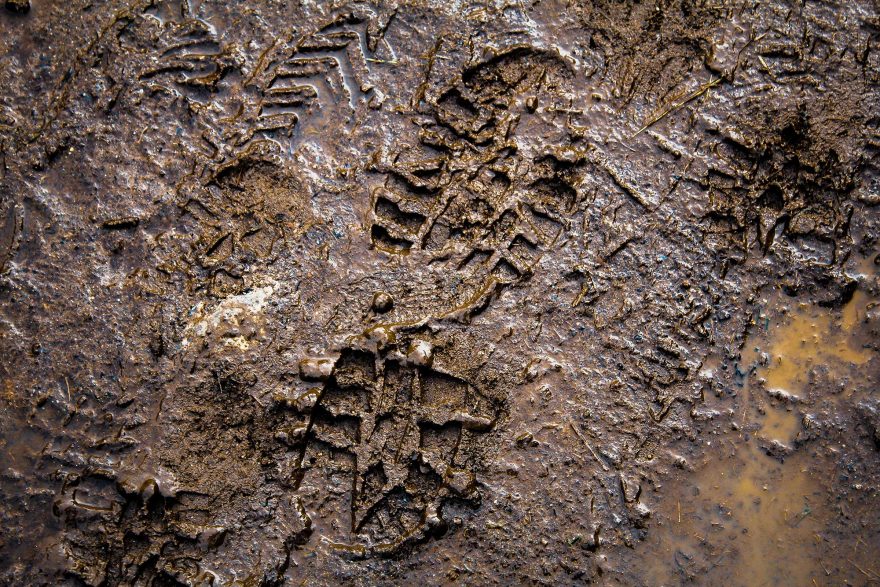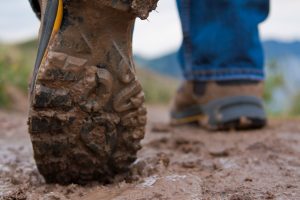
Finding and interpreting the tracks and sign left by the passage of people or animals is enjoyable, regardless of where you go, and even if you do not go anywhere. A proper knowledge of the tracks around you can help keep you safe in the wilderness, can increase your situational awareness and can help connect you to the land and living beings around you.
This is the fourth in a series of articles about Search and Rescue (SAR), with the primary focus of helping readers prepare for issues to prevent them from becoming life-threatening issues. In this series, I address preventative SAR by exploring the following topics: (1) Preparing for an outing; (2) Don’t get lost — stay found; (3) What to do if lost or hurt; (4) Track for fun while out and about; and finally, (5) Natural navigation tips.
The previous article discussed tips and techniques that are helpful if you find yourself in difficult circumstances. In this article I discuss a fun activity to do during your outing: tracking. This article presents answers to the basic questions: what, who, when, where, how and why.
Part 4: Track for fun while out and about
What is Tracking
Tracking, as intended in this article, can be generalized as “looking for, finding, and interpreting tracks and sign.” Following an animal by its tracks is just finding the animal’s tracks again, and again, and again … Tracks and sign can be made by animals, humans (which are also animals), tires, tools, weather and other sources. Since this article is both limited in scope and written by a SAR tracker, it will focus on human tracking. I am, however, a strong advocate for human trackers being familiar with animal tracks and sign and vice versa.
Tracks are disturbances to the otherwise normal ground that have some identifiable feature(s). Most tracks are typically made in one of two ways. The first, most common, is a deformity in the ground from the pressure applied by the track maker. The second is called transfer. Transfer occurs when a person (or other track maker) contacts a material (such as mud, water, blood, oil, paint, vegetation, etc.) that adheres to the person’s foot or footwear and is later rubbed off onto another surface.
There are two axioms about tracking. One is that, everywhere someone steps, they change the ground they walk on. Those changes are often called sign. The other axiom is that sign is discoverable; we can detect it (note: by “can” I mean it is possible, not that sign will be found every time). The great thing about tracking is that it exposes the truth of where someone went. These truths of tracks are unaffected by bias, motive or intention.

Who Uses Tracking?
There are many livelihoods that use tracking as a tool in the employees’ toolbox. There are few people in the world who make a living solely on tracking these days, but many more occasionally put this ancient skill to use. Law enforcement officers (including border patrol), search and rescue professionals, military operators, hunters, biologists, researchers, guides and land owners are an excellent start to listing the myriad resources that use tracking to enhance some of their regular tasks.
When Can You Track?
Any time. Any season. Most people see tracks during the day. Put a flashlight in their hands, and many experienced trackers actually prefer to track at night. For a missing-person search mission, tracking is best employed at the beginning of a search when there is less contamination to sort through.
Where Can You Track?
Everywhere. Period. OK, so I’m not as good as Wesley in The Princess Bride who can “track a falcon on a cloudy day,” but most surfaces render some sign of a person’s passage. The easiest way to get started is to look for track traps. A track trap is an area of ground that, if stepped on, will take and hold a track. These are places such as a muddy area, the beach, or various locations after a snowfall. Wherever the ground is soft, hiking trails often have track traps intermittently spaced. These spaces usually register quite a few tracks. The next time you go for a hike, see if you can pick a tread pattern on a trail and look for that particular tread pattern as you continue your walk.
How Can You Track?
This skill is available to anyone who has a sense of sight or touch. These are the two senses that give us the most information about a disturbance to the ground. If you see a clear track, go ahead and close your eyes. Then run your hand along the ground, starting outside of the track, and notice when you can feel the track. Especially when compared with the undisturbed area outside of the track, the sense of touch also yields track interpretation information. This comparison can yield tactile information in classes of temperature, moisture, texture, resistance, and hardness. These are fun to explore. Footprints can even be found by smell and sound.
Why Would You Track?
From the biased perspective of a tracker … because it’s fun and challenging. I can just about guarantee that you have seen tracks before. The more you look for them, the more you will find.
We in search and rescue use tracking because it can help point searchers in the direction of travel of a missing person. Law enforcement officers use tracking to gain evidence to help solve a crime and to find a missing person or suspect. Military operators use tracking to find improvised explosive devices, interpret enemy movements and locate other forces. Landowners can use tracking to monitor those who access their properties. Tracking can also enhance your personal safety by allowing you to know if someone is in the area. The list of potential uses goes on and on. Ultimately, to answer the question “Why track?,” my answer is “Why not?”
Rob Speiden is a professional search and rescue volunteer who has participated in over 330 searches since 1993. He teaches land navigation, tracking and other SAR classes for both the Virginia Department of Emergency Management and his own Natural Awareness Tracking School. Rob has written two books on tracking humans for SAR: “Foundations for Awareness, Signcutting and Tracking” and “Tracker Training.” More information about Rob’s books and classes can be found at www.trackingschool.com.
 Your Privacy Choices
Your Privacy Choices